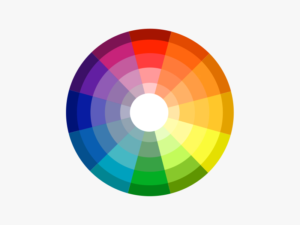
Learning how to choose colours
Have you ever gone into a hardware store, looked at the paint chips and samples and gotten immediately overwhelmed? If so, you’re not alone. There are so many options and shades of paint on the market, it can be really difficult to decide which ones are just perfect. Understanding how colour works can be helpful, so it’s a good idea to make yourself familiar with a few tenets of colour theory.
The main three colours
The first thing you should know is that there are only three colours . But there are so many different hues, how can there only be three?
All other colours are combinations of three primary colours. These colours are red, blue, and yellow. Every other colour you see in that colour wall at the hardware store is a combination of mixing these primary colours. Two primary colours mixed together will result in a secondary colour. For instance, red and blue together will make purple.
Primary colour and a secondary colour mixed together will result in a tertiary colour, like yellow-green or red-orange. There are also neutral colours, such as white, black, grey, beige, or ivory. While these appear to be without colour, most of them still come from combinations of other colours.
what is the colour wheel?

A helpful tool for understanding primary, secondary, and tertiary colours is a colour wheel. This is a physical tool in the shape of a circle that shows the relationships between colours. It is designed to show colours that will complement one another.
So now that you have a basic understanding of how colour works, you’ll want to figure out what kind of colour scheme you want in your project space. There are a few options, including monochromatic, complementary, triadic, or analogous.
A monochromatic scheme starts with a single colour as a base hue, and then incorporates various tones, shades, and tints of that colour. The result is a sleek, stylish look.
Complementary colours are found using the colour wheel. The colour directly across from your base colour is its complementary colour. They contrast vibrantly but can work well together if not overdone. Examples are the red and green we often see during the holidays, or purple and yellow like in a pansy flower.
Analogous colour groupings are three colours that are directly next to one another on the colour wheel, with the common colour in the middle. The create a harmonic, balanced look.
The last colour scheme we’ll discuss is one that is often used by professional interior designers: a triadic scheme. These colour schemes use colours that are spaced around the wheel evenly. This option gives you the ability to combine neutrals with bold shades, or to play around with different accents.
the best way to approach a triadic colour scheme
Decorators know that the best way to approach a triadic colour scheme is to use the 60-30-10 method. This easy-to-remember trick makes the whole job a breeze, while also helping you make sure your room has a balanced appearance. Here’s the breakdown:
60% – the base colour. This serves as the foundation of the room and provides the basic tone for the atmosphere you want to create.
30% – a secondary colour. This is often accomplished using an accent wall. Decorators also utilize window treatments, furniture, or rugs to add secondary shades into space. It should work well with the main colour, but also add a little extra character to the room.
10% – the accent colour. This where you really get to be creative by deciding on the artwork, accessories, etc. Artwork and motifs or patterns can really set the groundwork here, so start with your bigger or most interesting pieces and base the rest of the accents on them.
The lighting of your spaces, an important issue
When you’re choosing your paint colours, another thing to keep in mind is the lighting of your space. Different types of lighting have different impacts, and can make a huge difference in the overall look. For instance, recessed or down lighting will usually add warmth and coziness to a room. Florescent lighting can provide a cooler, more detached feeling. Natural light, like that from windows and skylights, will add an open, airy atmosphere to your space. Keep in mind the type of lighting you have when choosing your colour scheme.
Lastly, know what colours are warm or cool. Similarly to the way lighting can affect the tone of a room, colours can either provide a warm glow or a cool light in a room. The easiest way to know which colours are which is to draw an imaginary line straight down the colour wheel, going between red and purple on one side. It’ll cross through the greens on the other side, which illustrates that any colour can be made warmer or cooler. You can certainly mix warms with cools, but you’ll want to add a neutral shade to balance them out, or you’ll get jarred every time you enter the room.
Knowing these basics of colour theory will help you in your efforts to find the perfect paint for your project. Do a little research, test shades from sample pots, and determine what tone you want to set in the space. Then you’ll be set to begin creating a whole new look for your space!
© Copyright 2021 King Painting Specialists Pty Ltd.

+ There are no comments
Add yours